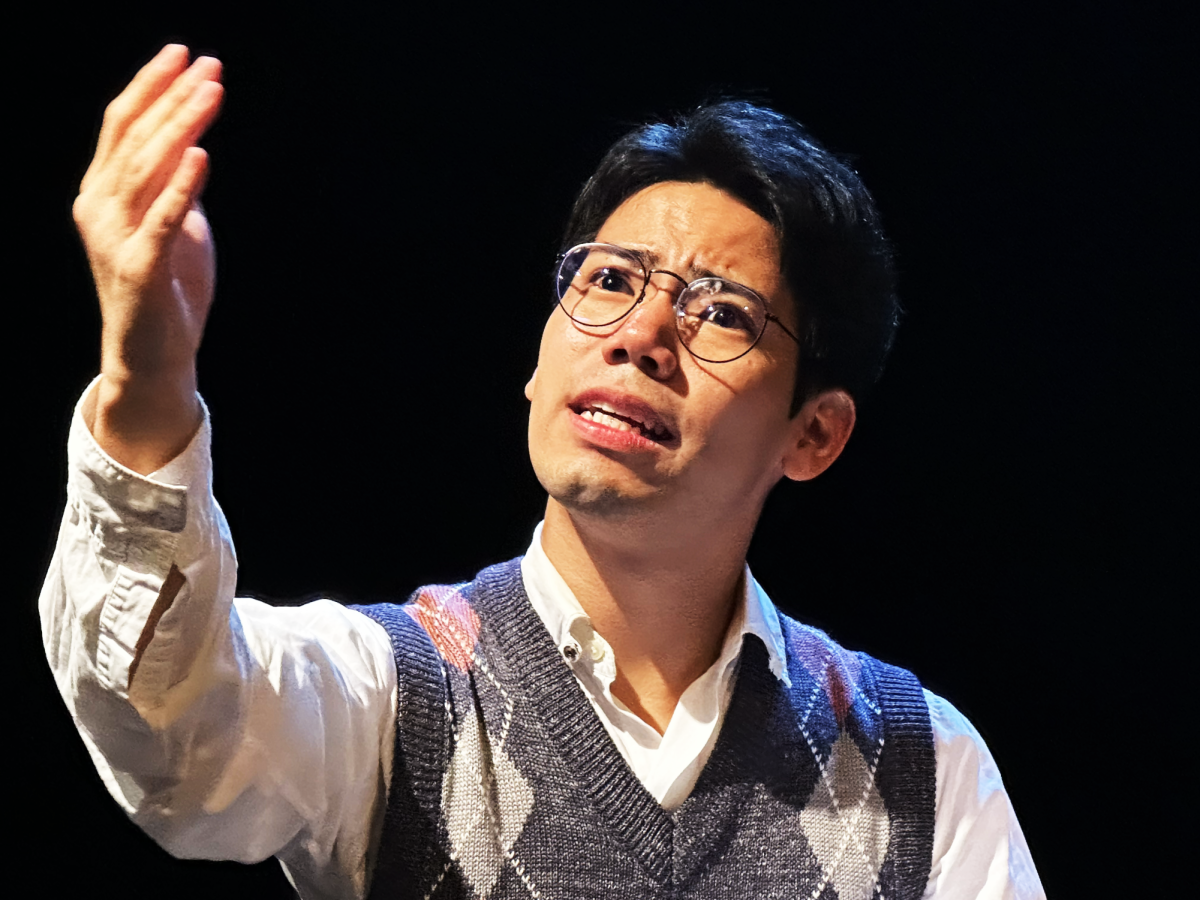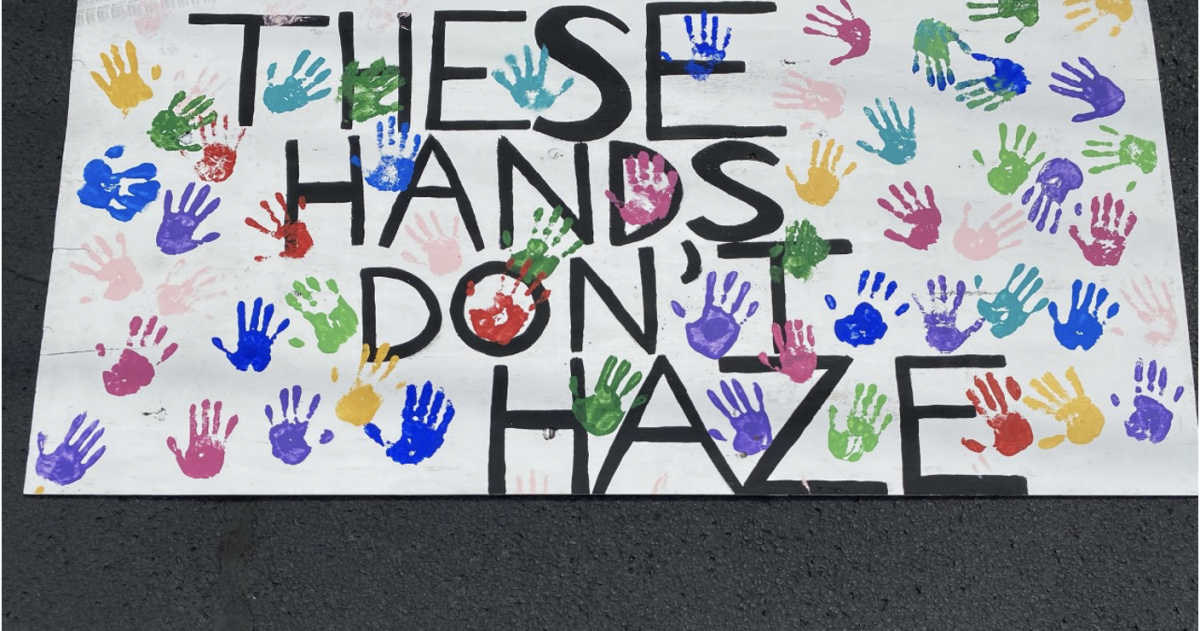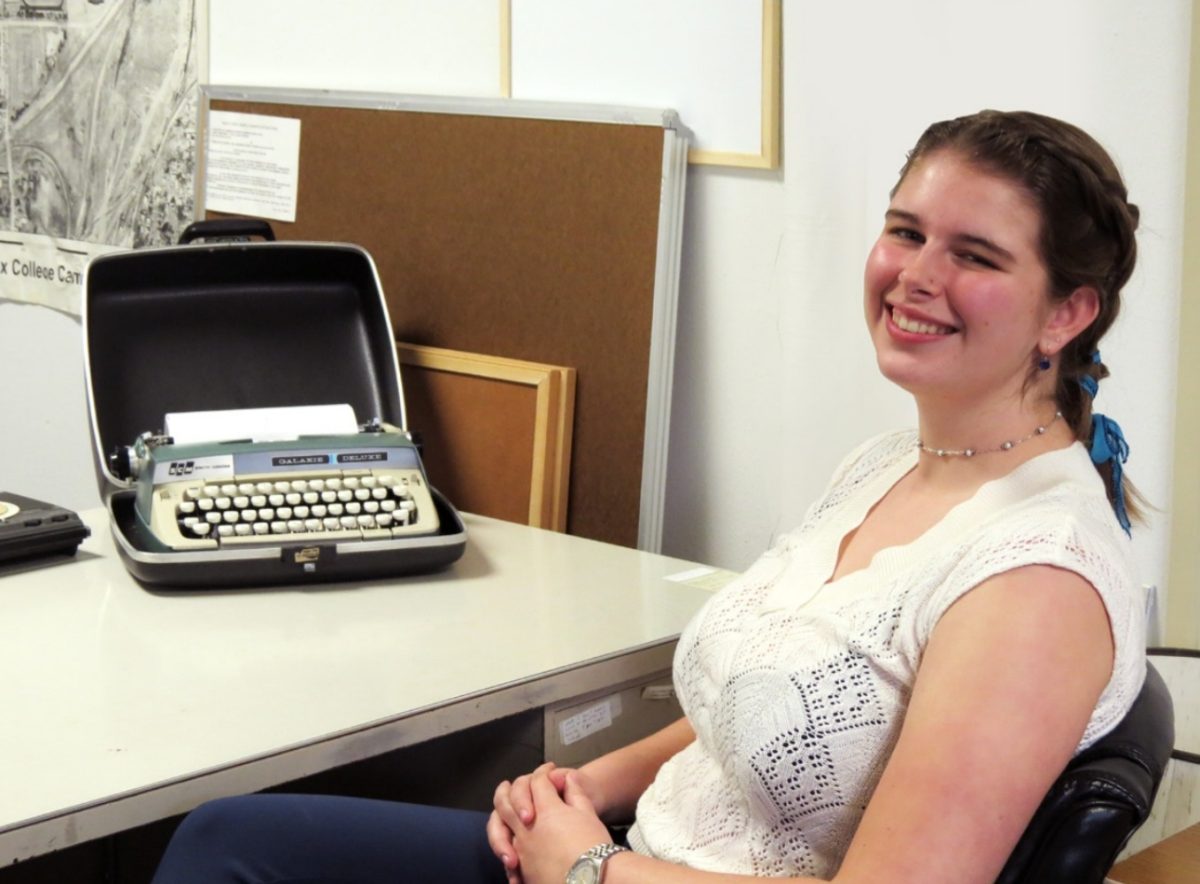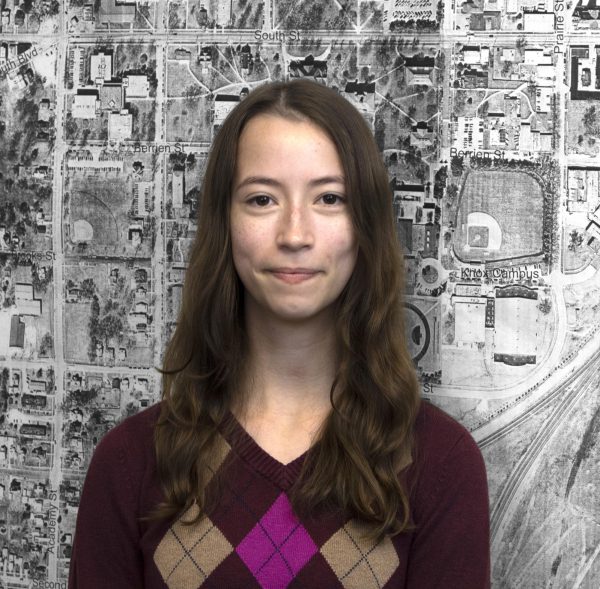A heart-wrenching performance of the struggles of Japanese Americans during World War II and the unjustness of the internment camps they were forced into was given by Junior Kengo Uehara on Oct. 11-12. Hold These Truths follows the story of one man, Gordan Hirabayashi, who fought against the United States courts trying to prove the unconstitutional nature of these camps. Kengo Uehara performed in this one-man show as the sole actor as well as director and set designer.
“I was in the studio until 2am, almost every night. I’m very close with campus safety now. They were always very nice and allowed me to use the studio,” said Uehara.
One of the things Uehara practiced throughout the rehearsal process was projecting and being understood. Being an international student from Japan, Uehara felt his English wasn’t very good and was worried about the audience not understanding him. He expressed his gratitude to his roommate, junior Lucas Dahlborg, who recorded videos of himself saying words in English to help Uehara with his pronunciation. Uehara focused on making full, beautiful sounds through his dictation, an idea that started during his time playing the trombone.
“I was a member of the orchestra and I’ve been playing the trombone from age ten to high school,” said Uehara. “And I was thinking, it’s kind of the same, the practice of music and the practice of theatre. You know, we have to learn the basics. My music teacher always said the most important thing is beautiful sound, the second is beautiful sound, the third is beautiful sound. I can play a technical piece, but without that beautiful sound, it isn’t good. With acting, it’s the same. I have to make basic, beautiful, and understandable noise first, and then speak emotionally and intentionally.”
Uehara’s dedication and hard work certainly paid off. Although this was Uehara’s first time acting, his performance was absolutely entrancing. He transitioned seamlessly from one character to another and seemed to fully embody the different characters during the dialogue portions of the script. Despite there being no other actors on stage, the dialogues felt as real as if there had been.
“Liz Metz helped me with that, and she asked about the iconic things or symbol of each character, so I was thinking about that. Some guy might have a cigarette and some guys walk a certain way, and so I was establishing a symbol for each character,” said Uehara.
As well as guidance from Smith V. Brand Distinguished Professor of Theatre and Chair of Arts Administration Liz Metz, Uehara enlisted the help of senior Cole Songster for the role of Assistant Director.
“I kind of felt like I acted more like a consultant than a standard director,” said Songster. “Kengo did all of the heavy lifting, as I believe was his hope, and I gave feedback and comments along the way. For me, it was mainly Kengo showing me the work that he had done over the course of the week, and me writing notes and giving him suggestions for changes at the end of the rehearsal.”

Hold These Truths faced some difficulties during the rehearsal process as Uehara and his production team had to work under the constraints of a second-stage, limited tech show. As a first-time set designer, Uehara struggled initially to create a set that would fit within the second-stage parameters.
“We planned to use a projector for my original idea, and I had pictures and videos. But there was a meeting and I wasn’t allowed to use the projector, because it was a second-stage performance,” said Uehara.
Despite initial disappointment, Uehara started looking for new ways to express his creative vision.
“At first I only used a few acting blocks,” said Uehara. “But then I thought, the blocks can be anything. They can explain Gordan’s emotions, they can be watch towers, or a bed. I realized the blocks have a lot of potential and so I tried to use that.”
Uehara spoke about a piano concert he went to over the summer, in Japan. He explained how this young pianist near his own age was able to invoke strong emotions throughout his performance.
“He didn’t have fancy light, he only had the piano. And without words, he expressed beautiful work and I was inspired by him,” said Uehara. “That’s why I knew that without fancy things, there are a lot of things I can do.”
The team also faced challenges with the show’s sound design. For a while, QLab, the application used to run and edit the sound cues, became unavailable to Uehara and first-Year Mao Shirai, one of the production’s sound designers. Through hard work of her own, Shirai was able to find a free version of the application. Uehara expressed gratitude towards his team for their perseverance and quick thinking in times of challenge.
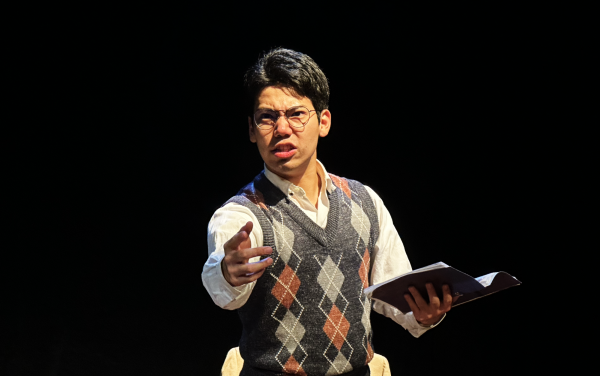
In the process of directing Hold These Truths, Uehara learned a lot about being a leader. He talked about how he’d often had leadership roles in Japan, but how his leadership style transformed throughout the show’s process.
“Back in Japan, I was sort of a leader and I assigned tasks to people, and I sometimes felt frustrated when they weren’t able to do things to a certain standard. It’s kind of arrogant, right? But after coming here, I couldn’t always do my job,” said Uehara.
He told a story of him first coming to Knox and volunteering to hang lights for a faculty theatre production. Though he was used to always thinking ahead of time for the next step, Uehara found out he didn’t know what to do next.
“The leader had to come up to show me how to do it. I learned a lot about leadership because the job of the leader is to look over everything and control it, but leaders shouldn’t put pressure. They should see all the members and care, and she did that. So it made me think maybe I should start looking at other perspectives and aspects of leadership,” said Uehara.
Uehara felt gratitude towards his team and cared about how they were doing outside of the show.
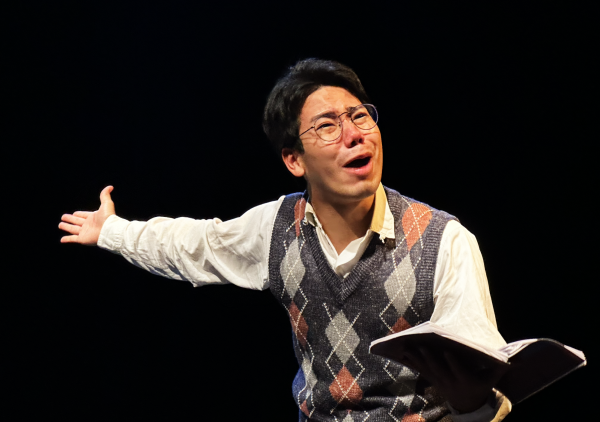
“He was always very thankful at the end of rehearsals! It was a little tricky sometimes, because there were so many moving parts that finding rehearsal times would occasionally get complicated, but he was always very appreciative, which was very sweet,” said Songster.
Uehara tried his best to make sure his team felt they had the support and encouragement they needed.
“I tried to have a lot of communication with Mao because she was a freshman,” said Uehara, “and I remember that my first term at Knox was really horrible and difficult. So I was trying to listen to how she was feeling, because I didn’t want to assign her a job she didn’t want to do.”
As a first-year student and first-time Sound Designer, Shirai expressed an adjustment period as she had to learn on the job. Shirai felt that Uehara really respected her opinions and clearly communicated his vision to her.
“His dedication inspired me to work hard as a Sound Designer, and he was the kind of leader who naturally brought others along with him. Even though he was the busiest, he always checked in on me to make sure I was getting enough rest, which I appreciated. It was a really inspiring experience,” said Shirai.
After the performances, Uehara was proud of his work, but admitted that the final product was not quite what he envisioned. He was pleased to have begun and finished the project, something he viewed as an important part of any life project, but wished he had advertised the show more. His team was very happy with the way everything turned out.
“I thought the final product was lovely! It exceeded my expectations, I feel like things all really came together to create a very impressive show despite all the challenges inherent to trying out something so difficult,” said Songster.
Shirai agreed with Songster and had a very favorable view of the performance.
“With each performance, I felt that the show got better, and I could see Kengo’s emotions becoming more deeply embodied in the lines, which drew me in. I got so caught up in it that I accidentally missed a sound cue during the second performance,” said Shirai.

Uehara chose Hold These Truths in particular because he felt it needed to be told. He explained that a lot of people feel ashamed of their experience in the internment camps and don’t want to talk about it, but it shouldn’t be a part of history that just slips into the shadows.
“Some people don’t want to remember the camps, and some people had PTSD after they were released. So I was trying to express their feelings and their struggles,” said Uehara.
As an audience member and someone whose family experienced the internment camps, I thought Uehara and his team put on a profound and passionate performance that connected with the audience. It was a bold work and a very ambitious project, but I hope its success emboldens others to tell whatever stories are important to them.

